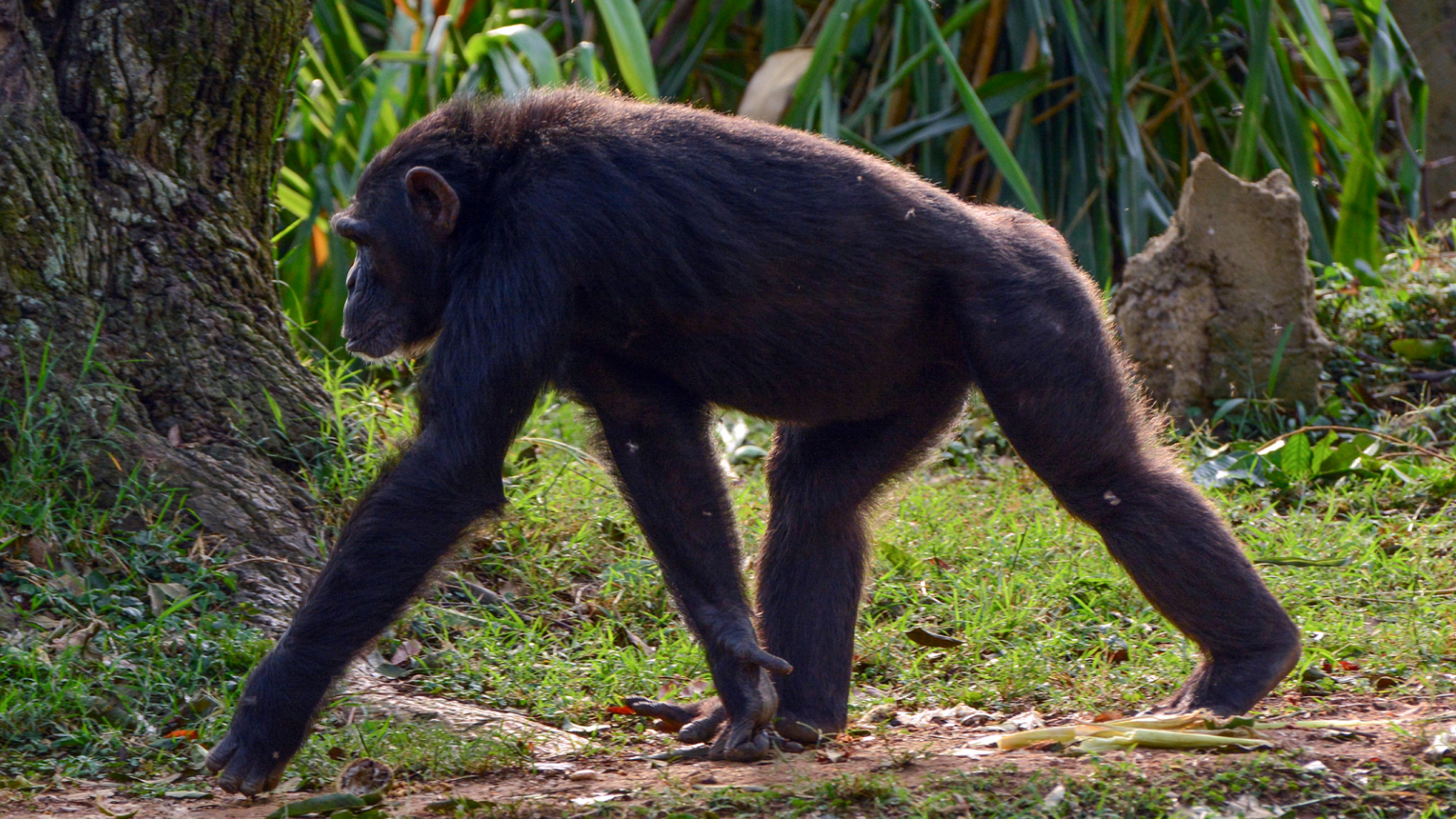
Approximately 25 million years ago, an ancestor of both humans and apes genetically diverged from monkeys and lost its tail. No one had identified the genetic mutation responsible for this dramatic change in our physiology — until now.
In a new study published Wednesday (Feb. 28) in the journal Nature, researchers identified a unique DNA mutation that drove the loss of our ancestors' tails. It's located in the gene TBXT, which is known to be involved in tail length in tailed animals.
The impressive discovery began when first study author Bo Xia, formerly a graduate student at New York University who is now a principal investigator at the Broad Institute, injured his tailbone and became interested in the structure's origin.
"Bo is really a genius because he looked at something that thousands of people, at least, must have looked at before — but he saw something different," said Itai Yanai, scientific director of the Applied Bioinformatics Laboratories at NYU Langone Health and a senior author of the study.
Related: What if humans had tails?
Jumping genes and "dark matter"
Over millions of years, changes in DNA allow animals to evolve. Some changes involve only a single rung in DNA's twisted ladder, but others are more complex.
So-called Alu elements are repetitive DNA sequences that can generate bits of RNA, a molecular cousin of DNA, that can convert back to DNA and then insert themselves randomly into the genome. These "transposable elements," or jumping genes, can disrupt or enhance a gene's function upon insertion. This specific type of jumping gene exists only in primates and has been driving genetic diversity for millions of years.
In this latest study, the researchers found two Alu elements in the gene TBXT that are present in great apes but not in monkeys. These elements aren't in the part of the gene that codes for proteins — the exons — but rather in introns. Introns are DNA sequences flanking exons that have been referred to as "dark matter" of the genome because they were historically assumed to have no function. They are removed, or "spliced," out of the sequence before an RNA molecule gets converted into protein.
In this case, however, when cells use the TBXT gene to generate RNA, the repetitive nature of the Alu sequences causes them to bind together. This complex structure still gets cut out of the larger RNA molecule but takes an entire exon with it, thereby changing the final code for and structure of the resulting protein.
Related: 10 things we learned about our human ancestors in 2023

"We did a lot of other analyses of other genes implicated in tail length or morphology. And, of course, there are differences, but this was like a lightning bolt," said Jef Boeke, director of the Institute for Systems Genetics at NYU Langone Health and a senior author of the study. "And it was noncoding DNA [introns] that was 100% conserved in all the apes and 100% absent in all the monkeys," he told Live Science.
In human cells, the researchers confirmed that the same Alu sequences appear in the TBXT gene and result in removal of the same exon. They also found that the related RNA molecule can be cut in a variety of ways to generate multiple proteins from the same gene. By comparison, mice make only one version of the protein, so having both versions seems to prevent the formation of tails, the team concluded.
This way of making different proteins from the same gene is called "alternative splicing," and it is one of the reasons human physiology is so complex. But this is the first time Alu elements have been shown to cause alternative splicing.
"Mutations like this have often been thought to be of limited consequence in evolution. Here the authors show that such a mutation has had a profound impact on our species," said Kirk Lohmueller, a professor of ecology and evolutionary biology and of human genetics at the University of California, Los Angeles who was not involved in the study.
"It is exciting to think of how many other complex mutations like this could have generated important traits throughout human evolution," Lohmueller told Live Science in an email.
Bipedalism and birth defects
The researchers experimented with inserting these same jumping genes into mice, and they found that the mice lost their tails.
Notably, evolutionary biologists hypothesize that the loss of the tail allowed humans to become bipedal, according to a 2015 review. "We are the only paper that has ever put together a plausible scenario for how it happened," Yanai told Live Science.
"We're now walking on two feet. And we evolved a big brain and wield technology," he said. "All from just a selfish element jumping into the intron of a gene. It's astounding to me."
Interestingly, the researchers found that the mice that had lost their tails showed a greater prevalence of spina bifida, a birth defect that affects the neural tube, an embryonic structure that gives rise to the spinal cord and brain. The condition affects approximately 1 in 1,000 human births, according to the Centers for Disease Control and Prevention.
"It may be a sort of unintended consequence that TBXT deficiency gives you a short tail … but it makes it more likely that you don't get that complete neural closure," meaning a hole is left in the neural tube, Boeke said.
"No one ever thought that, by just following our curiosity, we would make a mouse lose their tail by putting in the same mutation … and then we see the mouse also has a neural tube defect," Yanai added.
The discovery of this type of alternative splicing will likely influence the whole field of genomic analysis in the future.
"I think there's going to be more of them out there," Boeke said of these influential Alu elements. Therefore, he added, there's probably alternatively spliced proteins out there that are actually the root cause of some evolutionary change in our traits.
Ever wonder why some people build muscle more easily than others or why freckles come out in the sun? Send us your questions about how the human body works to community@livescience.com with the subject line "Health Desk Q," and you may see your question answered on the website!







